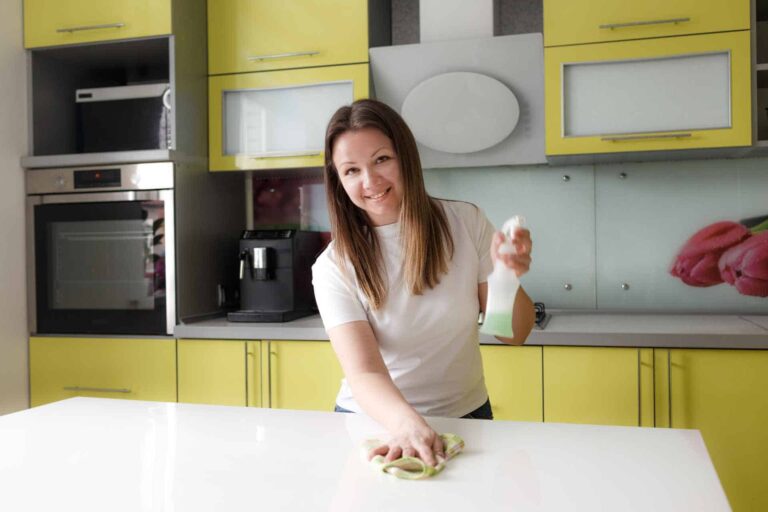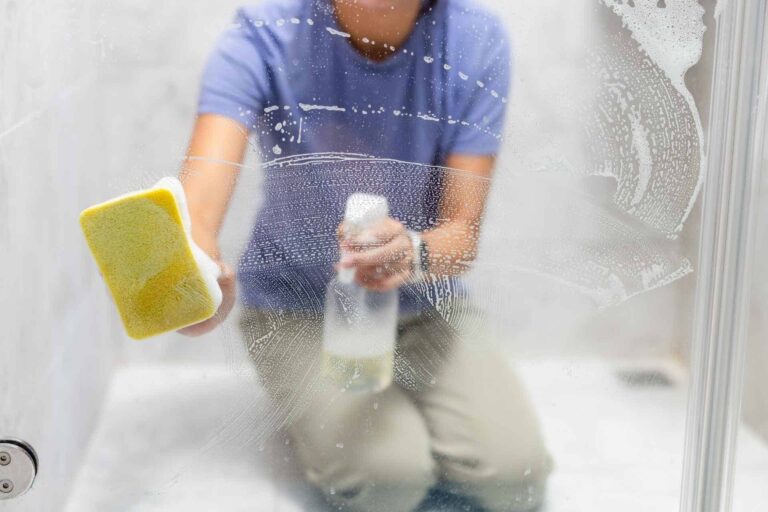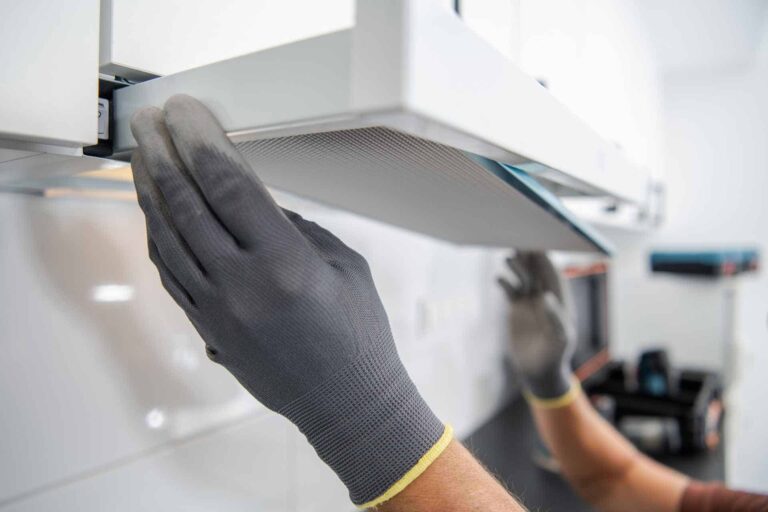How to Clean Kitchen Sink Drain Pipe Efficiently
The importance of knowing how to clean kitchen sink drain pipe efficiently cannot be overstressed. A clean sink drain pipe not only improves the overall hygiene of your kitchen but also ensures smooth and optimal function. Over time, a buildup of food particles, grease, and other debris can lead to clogged pipes and potentially costly repairs. In addition, this buildup can lead to unpleasant odors and serve as a breeding ground for bacteria, affecting the cleanliness of your dishes and potentially influencing your health.
Common problems associated with dirty kitchen sink drain pipes largely stem from the buildup of debris and gunk. One of the most obvious signs of a dirty drain pipe is a foul odor that emerges from the sink. This is caused by the decomposition of food residue and other organic matter. Clogging is another prevalent issue with dirty pipes. Over time, solid particles can accumulate and form a blockage, preventing water from flowing smoothly. If left unchecked, these blockages can lead to water backing up in the sink, potentially resulting in water damage or even pipe bursts. Dirty drain pipes can also become a haven for pests, such as fruit flies, which are attracted to the decaying organic matter. Lastly, from a health standpoint, dirty pipes can be a breeding ground for bacteria and mold, posing risks to the residents’ health.
Tools You Will Need
To properly clean your kitchen sink drain pipe, you will need the following tools:
- A plunger
- Baking soda
- Vinegar
- Boiling water
- Rubber gloves (optional)
- Drain snake (optional)
Plunger: This is a common tool used to dislodge blockages in the drain. The suction created by the plunger can help break up the clog and allow it to pass through the pipe.
Baking Soda: Baking soda is a natural cleaning agent that is safe for kitchen sinks. It helps to dissolve greasy buildup and neutralize odors.
Vinegar: Vinegar, particularly white vinegar, works well in combination with baking soda to create a foaming action that can dislodge clogs and further neutralize odors.
Boiling Water: Pouring boiling water down the drain is a simple and effective way to break up clogs. The heat can melt fatty residues and dislodge other debris.
Rubber Gloves (optional): These can be used to protect your hands during the cleaning process, especially if you have sensitive skin or want to avoid direct contact with the cleaning materials.
Drain Snake (optional): This is a flexible rod that can be inserted into the pipe to break up deeper clogs that can’t be reached by a plunger. Drain snakes can be particularly effective for larger or more stubborn clogs.
How to Clean Kitchen Sink Drain Pipe Efficiently – Step-by-step Guide
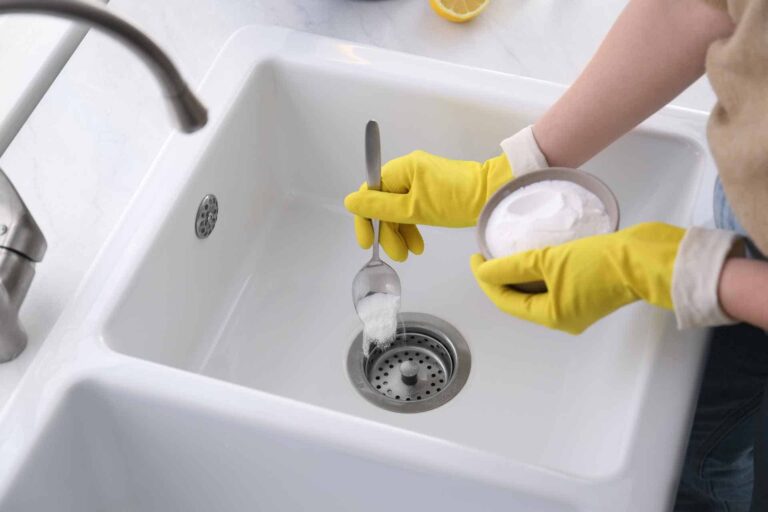
Before you begin cleaning your kitchen sink drain pipe, ensure your workspace is adequately prepared for a smooth and efficient process. First, clear the area around your sink to avoid any accidental damage to surrounding items. Next, gather all the tools mentioned above and place them within reach for easy access. If you’re using a drain snake, familiarize yourself with its operation by reading the manufacturer’s instructions. If you’ve chosen to wear rubber gloves, put them on. Finally, ensure good ventilation in your kitchen to avoid discomfort from the smell of vinegar. With these preparatory steps completed, you are ready to start the process of cleaning your kitchen sink drain pipe.
Cleaning the drain pipe
Begin the cleaning process by pouring a half cup of baking soda into the drain. Be sure to spread it evenly so it lines the walls of the drain. Then, pour a half cup of white vinegar into the drain. You should observe a bubbling reaction as the vinegar reacts with the baking soda. Allow this mixture to sit in the drain for about 15-20 minutes. This will help to dislodge any dirt, grease, or food particles.
After the waiting period, boil a pot of water and carefully pour it into the drain. The boiling water will wash down the baking soda and vinegar, further dislodging any remaining debris in your drain pipe. If you find that the blockage persists, use the drain snake to manually clear the pipe.
Remember to be gentle in this process. Excessive force could damage the pipe. After snaking, rinse the drain with more boiling water to ensure all debris has been cleared. Repeat this process if necessary, until your drain pipe is clean and the water flows freely. Once done, your kitchen sink drain pipe should be free of unpleasant odors and clogs, and ready for use.
Post-Cleaning Steps
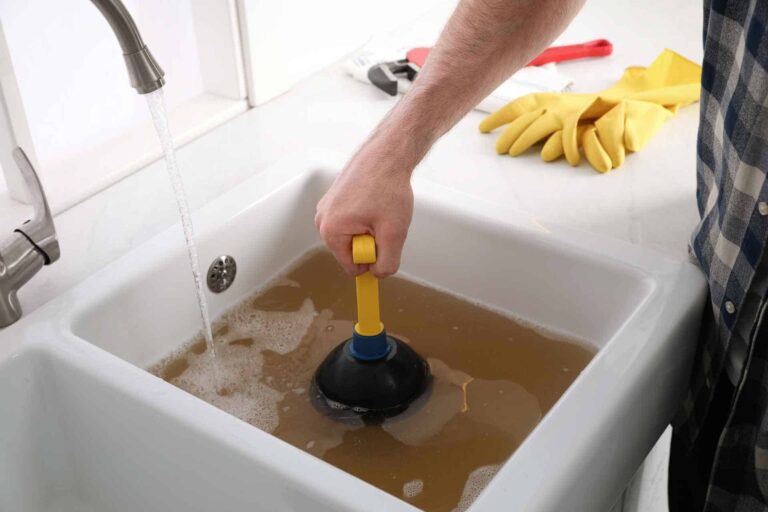
After thoroughly cleaning the kitchen sink drain pipe, it’s time to tidy up your workspace. Dispose of any residual debris or used baking soda and vinegar responsibly. Carefully clean the drain snake if used, and store it properly for future use. Clean your sink and surrounding area using a mild detergent and warm water, ensuring no traces of baking soda or vinegar residue remain. Finally, remove your gloves, wash your hands thoroughly, and ventilate the kitchen to disperse any lingering vinegar odor. Regular maintenance of your kitchen sink drain pipe can prevent future clogs and keep your sink functioning optimally. Regularly repeating this process, for instance, once a month, can help ensure your plumbing stays clear and odor-free.
Common Mistakes to Avoid
Ignoring Early Signs of Clogs: Many people tend to ignore the early signs of a clogged drain such as slow water drainage, bubbling sounds, or foul smell. This can lead to more severe blockages that are harder to clean.
Using Chemical Drain Cleaners: While they might seem like a quick solution, chemical drain cleaners can cause more harm than good. They can corrode the pipes leading to leaks and may not effectively remove the entire clog.
Forgetting to Use Hot Water After Cleaning: After using baking soda and vinegar, it’s essential to rinse the drain with boiling water. This step helps to wash away the dislodged debris, preventing it from re-settling in the pipes.
Applying Excessive Force when Using a Drain Snake: A drain snake can be a useful tool for breaking up clogs. However, applying too much force can damage the pipes.
Lack of Regular Maintenance: Regular maintenance is vital for keeping your drain pipes clean and fully functional. Ignoring regular maintenance can lead to build-up and severe clogs in the long run.
How to avoid them
Avoiding common mistakes while cleaning your kitchen sink drain pipe requires a proactive approach. Pay attention to early warning signs of a clog such as slow drainage or unusual sounds, and take immediate action to prevent more severe blockages. Instead of resorting to chemical drain cleaners, which can damage your pipes, opt for natural methods like using baking soda and vinegar. Remember, following this process, it’s crucial to flush the drain with hot water to dispose of any loosened debris effectively. If you’re using a drain snake, apply gentle pressure to avoid damaging the pipelines. Lastly, make regular maintenance a habit. By cleaning your drains monthly, you can keep them clear, functional, and odor-free.
Products to use and avoid
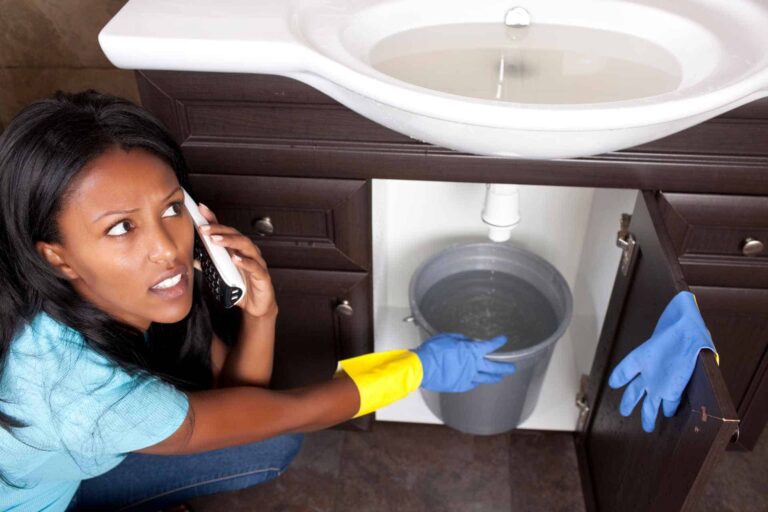
Maintaining a clean drain pipe isn’t just about immediate fixes to clogs or blockages; it’s about consistently implementing habits to prevent these issues from arising in the first place. Invest in drain strainers to catch food particles and other debris, reducing the likelihood of blockages. Hot water should be used regularly for rinsing the drain, as it helps to break down and wash away fat or grease that may have accumulated. Biodegradable bacteria or enzyme-based drain cleaners can also be used periodically. They are a safer alternative to chemical cleaners and can keep your drain pipes clear by breaking down organic material. Remember, maintenance is key: a bit of preventative care can save a significant amount of time, money, and frustration in the long run.
Conclusion
In conclusion, maintaining a functional and clear sink drain pipe involves a proactive approach that includes early detection of clogging signs, use of natural cleaning methods, and regular maintenance habits. Key steps to remember include looking out for slow drainage or unusual sounds, using non-chemical solutions like baking soda and vinegar for cleaning, flushing out loosened debris with hot water, and applying gentle pressure when using a drain snake. Regularly using hot water for rinsing, investing in drain strainers, and choosing biodegradable bacteria or enzyme-based cleaners can significantly reduce clogging incidents. These practices not only keep your drain pipes clear and odor-free but also save you time, money, and the hassle of dealing with severe blockages.
Regular cleaning is the cornerstone of effective drain maintenance. By adhering to a consistent cleaning schedule, you can prevent the accumulation of debris that leads to blockages in the first place. This proactive approach saves you from the inconvenience and cost of dealing with severe clogs or plumbing damage. Furthermore, regular cleaning promotes a healthier home environment by preventing the growth of bacteria and mold that often accompany stagnant water in clogged drains. It’s an integral part of home maintenance that shouldn’t be overlooked for the long-term wellbeing of your household and your plumbing system.
FAQs
Why is my kitchen sink drain pipe clogged?
Your kitchen sink drain pipe could be clogged due to various reasons. The most common culprits include food debris, grease, hair, or even foreign objects that have accidentally fallen into the sink.
How often should I clean my kitchen sink drain pipe?
The frequency of cleaning your kitchen sink drain pipe depends on how frequently you use your sink. However, as a general rule of thumb, it is recommended to do a deep clean at least once a month to prevent severe blockages.
What is the best natural way to clean a kitchen sink drain pipe?
Baking soda and vinegar is an effective and natural way to clean a kitchen sink drain pipe. Add a half cup of baking soda into the drain, followed by a half cup of vinegar. Let it sit for 20-30 minutes and then rinse with boiling water.
How can I prevent my kitchen sink drain pipe from clogging?
Preventing a clog in your kitchen sink drain pipe involves regular cleaning, avoiding disposing of grease or oil down the sink, and using a sink strainer to prevent large food particles from going down the drain.
Is it safe to use chemical drain cleaners on my kitchen sink drain pipe?
While chemical drain cleaners can be effective, they can also be harmful to your pipes if used frequently. It’s better to use natural solutions or enzyme-based cleaners whenever possible.


